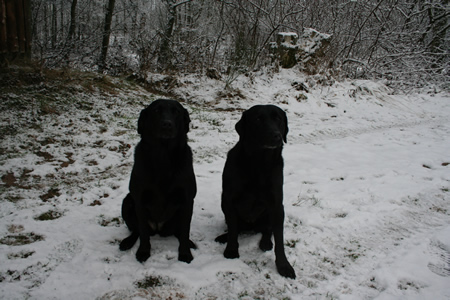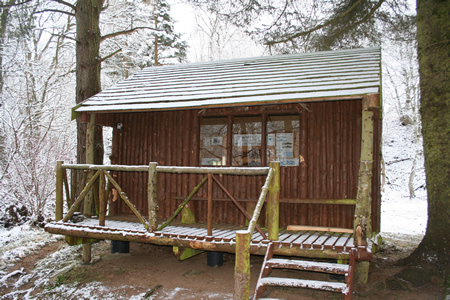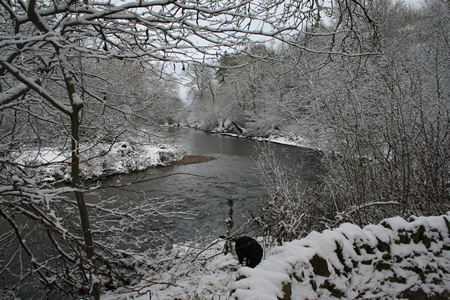These bulletin blogs represent news about Finavon and the South Esk, and my views as a riparian owner. They are not the views of any other organisation, nor are they designed to promote the interests of any individual or organisation other than Finavon Castle Water and factors affecting the fishery. Tony Andrews
I know that regular visitors to this blog may feel that I should be writing about the South Esk. I promise you that I will return to South Esk matters, especially FCW of course, but during these short winter days and long nights I wanted you to know that I am not wasting my time! Besides which, your views and advocacy are invaluable, and I look forward to discussing this and other issues with you in one of the FCW huts during the coming season, which is one month away from today!
Close Containment: the plot thickens.
The speed of development of the Close Containment argument is encouraging.
In August 2011 Professor Ken Whelan, AST Research Director, and I were in New Brunswick to discuss with our US & Canadian partner NGO, the Atlantic Salmon Federation, and the prospects for close containment farmed salmon grow-out – from ovum to market size adult.
Our reason for visiting ASF was that they had announced their support for a trial project in West Virginia. Our visit revealed three important facts:
A) There is a determination in Canada and USA to develop Close Containment as a realistic alternative to current marine-based, open cage salmon farm units, many of which are ‘inappropriately’ sited
B) The technology is in place. The product has been independently tested and tasted. CC offers a biological firewall between farmed and wild salmonids, no pollution, fewer chemicals, no disease, no parasites, no waste, close to market minimising stress etc.
c) There is a significant level of interest for ‘sustainably grown’ salmon from some retailers and many consumers.
We left St Andrews NB having decided that AST will support development of CC salmon aquaculture, however long it may take to come to fruition.
We acknowledge that, for the foreseeable future, currently in many cases ‘unsustainable’, marine-based systems will continue, but concluded that we now need alternative forms of salmon aquaculture so that decision-makers understand that open cages are not the only option in places where it can be shown that there is a high risk to migratory salmonids.
Based on AST’s Sea Lice Policy, published in 2011, we developed the following approach in close cooperation with the other NGOs:
1. Undertake a risk analysis of all existing and potential saltwater farm sites on the Scottish west coast and in the islands. This is what MIAP is doing.
2. Categorise sites on a scale of risk. Ditto
3. Develop alternatives (which is where CC salmon farms come into play) to sites which are shown as too high a risk to wild salmonids to be allowed to continue operating. AST and S&TA are taking this forward.
4. Ensure that protocols and good husbandry standards are met and independently verified and enforced in all remaining marine-based sites. ASFB and RAFTS are leading on wild fish interests’ response to the Aquaculture and Fisheries Bill.
5. Obtain political and industry support for a range of methods and technologies to ensure that the right sort of salmon farm is located in each risk-assessed site (i.e. minimising damage to wild stocks). We are all working together on this.
It is all very well having a wish list as above, but we needed some action to back it up. Therefore AST undertook the following actions:
1. In December 2011 Andrew Robertson and a well known Norwegian salmon farmer were introduced to each other by AST.
2. In January 2012 AST held a private dinner at the Flyfishers’ Club in London for the newly formed company ‘FishFrom’ and members of the investment community. This was the springboard for all subsequent developments.
3. During the spring, summer, autumn of 2012, and continuing to now, AST provides regular back-up and support to FishFrom. Whilst being careful to ensure that AST does not transgress its charitable status by getting involved in a commercial venture, we have adhered to our ‘biological firewall’ principle in continuing to give moral support to FishFrom, whose operations are well described on its website.
4. In October 2012 Melfort Campbell and I attended an ASF workshop at St Andrews NB on Close Containment which is written up on the AST website. Conclusions were:
a) The technology and the product are ready and there is a growing number of companies in Europe, China and North America involved in development of the CC industry.
b) There is considerable interest from consumers and retailers
c) The investment community is “not yet comfortable” with the business models currently on offer.
d) It is not a question of “if”: it is a question of “when”. Meantime cc offers options for siting open cage units in “dangerous sites”
e) In the context of destruction of many different species fish stocks there is a determination, well supported by considerable resources, to rollout CC technologies globally, not only for Atlantic Salmon.
f) Finfish aquaculture is far more economically viable and environmentally sustainable than any of the land-based animal production industries. To become genuinely sustainable salmon aquaculture must clean up its act.
Following the CC workshop Melfort and Tony were in New York in December 2012 for the ASF’s AGM where, yet again, we were impressed by the level of commitment and resources available to develop CC technologies and, as an interim, take on the existing salmon farming industry and persuade it to become environmentally sustainable. The issue remains that of commercial viability, and this is now being addressed on a daily basis from West Virginia to Shantou.
Speaking of which, Ken Whelan visited Shantou, China in December 2012 to learn about development of alternatives to the current practice of feeding farmed salmon on little fish (anchovies) from South America. Quite apart from the 2000 years of Chinese experience of sustainable aquaculture, Ken saw for himself the level of sophistication and relatively low cost of Chinese built CC finfish systems, confirming our belief that commercial viability is within reach. By growing algae and sea weeds, combined with polychaetes (ragworms) infused with fish oils (but using only a small proportion of the wild little fish currently used by the industry) genuine, across-the-board sustainability for CC systems may be achievable.
Meanwhile FishFrom has moved with astonishing speed having obtained political support for its CC systems at the highest level of the Scottish Government, identified four possible sites in Scotland and one in Wales, received serious enquiries from 5 countries, completed the business plan and received serious expressions of interest in their technology and know-how from China and the European and City of London investment communities.
No-one is suggesting that CC aquaculture will become the norm overnight. It may take a decade to get open-cage fish farms away from high risk sites. But one thing is for certain, which is that CC systems are the future.
What next? As soon as CC salmon comes onto the market I would like to see every salmon fisherman in the country, every member of his/her family, their friends, acquaintances and people they can persuade in the pub or wherever, to buy only CC salmon.
It is up to us to make the demand. Combine that consumer pressure with the PR that Andrew Robertson and his industry colleagues will aim at politicians, the media, supermarkets and wholesalers, and the sea change we are all looking for may come sooner than we think.
Tony Andrews
17th January 2013



